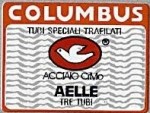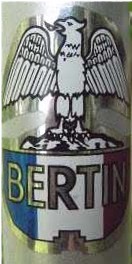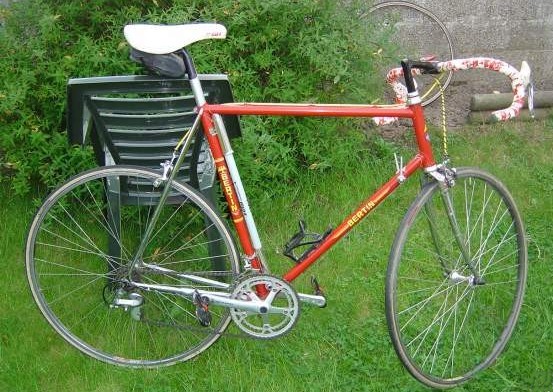In the 1980s, several trends begun earlier continued to play themselves out. The simplification of graphics and decals continued. Bertin’s distributorship for Shimano manifested itself in Shimano’s evolving domination of the OEM gruppos found on new Bertins.  The bicycles themselves were built with simplier and more easily finished lugs and tubing choice moved away from the traditional reliance on Vitus to further proliferation of Reynolds into 531 Professional and 501. Columbus Aelle was used extensively at lower price points with Columbus SL being found in the SSC ( Special Service Course ) just like 531 Professional. Durifort/888 and Super Vitus remained in the middle price lines along with three tube 531 framesets. Chrome forks in the Italian style proliferated in the high end bicycles and framesets.
The bicycles themselves were built with simplier and more easily finished lugs and tubing choice moved away from the traditional reliance on Vitus to further proliferation of Reynolds into 531 Professional and 501. Columbus Aelle was used extensively at lower price points with Columbus SL being found in the SSC ( Special Service Course ) just like 531 Professional. Durifort/888 and Super Vitus remained in the middle price lines along with three tube 531 framesets. Chrome forks in the Italian style proliferated in the high end bicycles and framesets.
Readers should be aware that some sequencing of the graphic periods in the 80s and thereafter remains conjectural and subject to change as my documentation for the period is less complete than for the eras to date. Any reader is welcome to email me with either corrections or additions.
The bicycle illustrated above is a 1981 C 70. The process of simplification can be seen in the lack of contrasting paint panels and the chrome fork on 
 this higher end model. The frame graphics remained on the seat tube as did the World Championship stripes. The head tube logo was the classic foil flag and eagle which had begun in the 60s. The A.B. diamond decal and the yellow top tube riband remained as previously in the late 70s. Tubing decals remained at the top of the seat tube and the top of each fork blade. Bertin traditionally mixed tubing applications and continued to do so in the 1980s. It would not be unusual to see a Super Vitus main frame with Durifort/888 forks or a Columbus Aelle Tretubi (Three Main Tubes)
this higher end model. The frame graphics remained on the seat tube as did the World Championship stripes. The head tube logo was the classic foil flag and eagle which had begun in the 60s. The A.B. diamond decal and the yellow top tube riband remained as previously in the late 70s. Tubing decals remained at the top of the seat tube and the top of each fork blade. Bertin traditionally mixed tubing applications and continued to do so in the 1980s. It would not be unusual to see a Super Vitus main frame with Durifort/888 forks or a Columbus Aelle Tretubi (Three Main Tubes) with Durifort branded forks. The model C 35 did the same thing with Reynolds 531 main tubes and Vitus Durifort in the forks and stays. Vitus Duralinox glued aluminum framesets were branded with the same
with Durifort branded forks. The model C 35 did the same thing with Reynolds 531 main tubes and Vitus Durifort in the forks and stays. Vitus Duralinox glued aluminum framesets were branded with the same  graphics as the steel bicycles and carried the 979 tubing stickers on the downtube and on both fork blades. ( See photo below )
graphics as the steel bicycles and carried the 979 tubing stickers on the downtube and on both fork blades. ( See photo below )
As the 80s progressed, Bertin redesigned their graphics format. The full Andre Bertin name on the seat tube was replaced by a yellow eagle and  below it just the name Bertin in capitals. Twin bands around the seat tube were found above and below the name.
below it just the name Bertin in capitals. Twin bands around the seat tube were found above and below the name.  As well, the name Bertin in capitals was now found on the down tube with “wings” on either side. Graphics varied in colour to contrast with the frame colour of the bike. One notable change was the shift to a new style of head tube badge. The coloured badge on silver foil characteristic of the 1960s and 70s was replaced by a coloured decal version similar in form to the eagle found on the seat tube.
As well, the name Bertin in capitals was now found on the down tube with “wings” on either side. Graphics varied in colour to contrast with the frame colour of the bike. One notable change was the shift to a new style of head tube badge. The coloured badge on silver foil characteristic of the 1960s and 70s was replaced by a coloured decal version similar in form to the eagle found on the seat tube. While the decade advanced, Bertins, in the more costly price points, acquired fully chromed forks and, sometimes, rear stays. The following picture shows the new graphics and the Italianate appearance of one of these mid-80s models. The A.B. diamond found on Bertins since the 1950s along with the “Made in France” yellow riband were applied occasionally in the early years of the decade but were gone by the decade’s end.
While the decade advanced, Bertins, in the more costly price points, acquired fully chromed forks and, sometimes, rear stays. The following picture shows the new graphics and the Italianate appearance of one of these mid-80s models. The A.B. diamond found on Bertins since the 1950s along with the “Made in France” yellow riband were applied occasionally in the early years of the decade but were gone by the decade’s end.
Bertin continued to market Vitus alloy framesets in their own graphics including the Futural with its monostay as shown in the illustration which follows. These were painted unlike earlier Vitus’ framesets which had the typical colour anodized main tubes of the 979.
By the middle of the 80s, graphics were again evolving. Once more the decals were simplified with the cost saving method of reducing the number of colours in the decal to cut costs of reproduction. French manufacturers were struggling against off shore imports given a favoured status by EU trade rules and costs had to be controlled. In the examples which follow, the changes can be clearly seen.
The seat tube/down tube arrangement of decals was retained but the the graphics were often monochromatic matching the frame colour. As well, there was a return to the foil head badge but with a modified design as can be seen in the accompanying illustration.
As well, there was a return to the foil head badge but with a modified design as can be seen in the accompanying illustration.
Tubing decals underwent a process of simplification as well.  The bicycle which follows has Reynolds 501 decals of the new, simplified style. The earlier, more complex TI-Reynolds format gave way to the bolder style illustrated. Fork blades were marked near the top of the blades as shown on this sample bike.
The bicycle which follows has Reynolds 501 decals of the new, simplified style. The earlier, more complex TI-Reynolds format gave way to the bolder style illustrated. Fork blades were marked near the top of the blades as shown on this sample bike.
As the decade closed, Cycles Bertin would follow the trends outlined earlier and move towards an outright sale of the company in 1993 which would remove Mr. Bertin from management.





